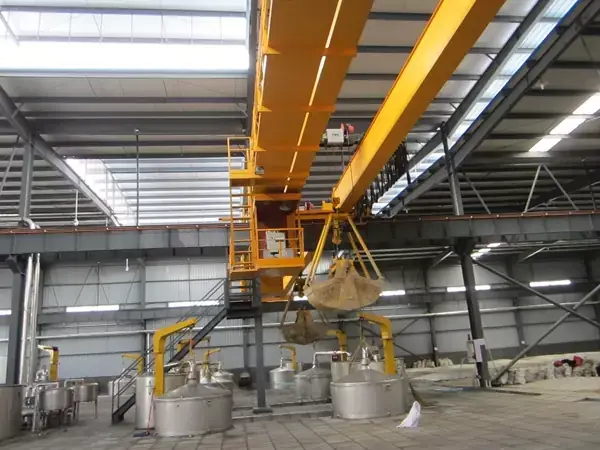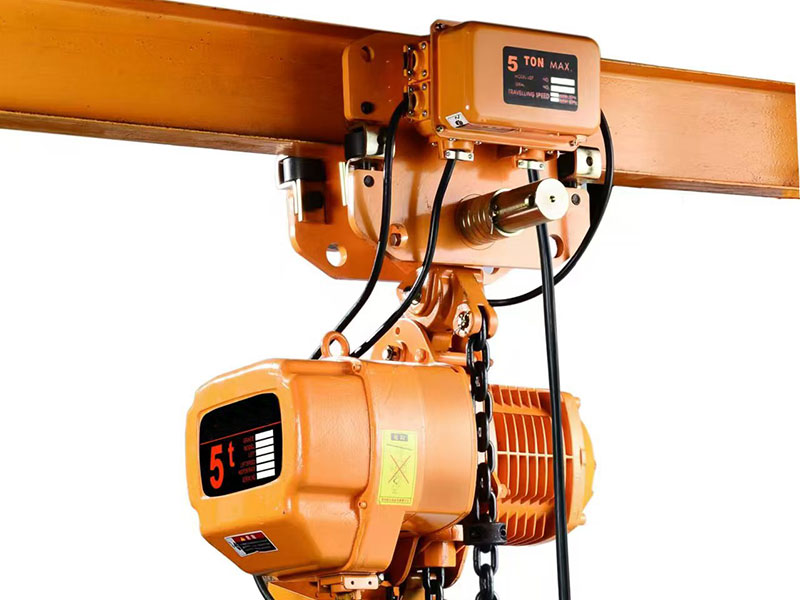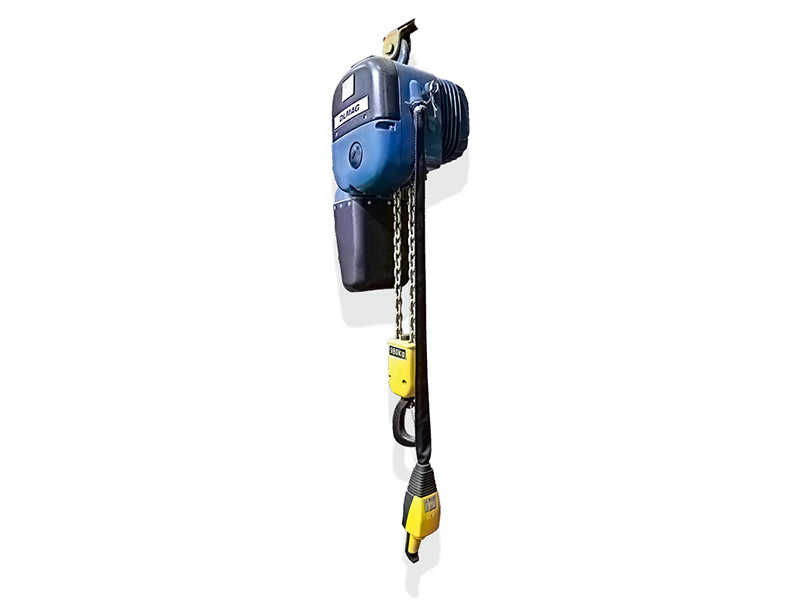Precautions for inspection of parts of single girder crane
Precautions for inspection of parts of single girder crane
1. Wire rope
(1) The number of broken wires within the lower torsion distance shall not exceed 10%, and the wear and corrosion on the surface of the steel wire shall not exceed 40% of the original diameter (for lifting molten iron or dangerous crystal steel wire ropes, the broken wire standard is 1/2 of that of ordinary cranes).Intelligent cranes are multi-action lifting machinery for vertical lifting and horizontal handling of heavy objects within a certain range.[1] The work is characterized by intermittent movement, that is, the corresponding mechanisms for reclaiming, moving, unloading and other actions in the same work cycle work alternately, and cranes are becoming more and more widely developed and used in the market.For bridge cranes, the rated lifting weight of boom type cranes varies with the amplitude, and the lifting characteristic index is characterized by the lifting moment.The value specified on the sign is the larger lifting weight.The horizontal distance between the center line of rotation of the gantry crane and the plumb line of the pickup device, in M.The amplitude of a non-rotating boom crane refers to the horizontal distance between the centerline of the spreader and the rear axle of the boom or other typical axis.
(2) The wire rope should be free of kink, dead ends, hard bends, plastic deformation, hemp core prolapse and other serious deformation, and the lubrication condition is good.
(3) For the length of the wire rope, we must be able to ensure that when the safety hook is lowered to a low position (including the pit), the remaining wire rope on each reel is not less than 3 turns.
(4) 2 fixed pressure plates at the end of the wire rope.
Two, pulley
(1) The pulley rotates flexibly, smoothly and without cracks, there are no defects in the flange part, and there are no defects that damage the wire rope.
(2) When the uneven wear of the wheel groove reaches 3 mm, or the wear of the wall thickness reaches 20% of the original wall thickness, or the diameter of the bottom of the wheel groove is reduced by 50% of the diameter of the wire rope, the pulley shall be reported for scrap.
(3) The pulley shield should be installed more firmly, without damage or obvious deformation.
Three, the hook
(1) The surface should be smooth, without cracks, acute angles and other defects. Defects on the hook are not allowed to be welded.
(2) The hook should rotate flexibly, and the positioning bolts and opening pins should be fixed intact.
(3) Cracks in the dangerous section of the lower part of the hook and the retracting groove section of the threaded part of the hook tail are strictly prohibited.
(4) The amount of wear on the dangerous cross-section may not exceed 10% of the original size.The increase in the wear of the hook bushing should not affect more than 50% of the original size, and the wear of the mandrel should not exceed 5% of the original size. This article is mainly from weaving dreams
Four, single girder crane brake
(1) The action is flexible and reliable, the adjustment should be moderately tight, no cracks, no spring plastic deformation, and no end.
(2) When the brake wheel is released, the gap between the brake tile and the brake wheel should be basically equal.The brake opening (unilateral) should be 1 mm, and the elevator should be 0.7mm.
(3) The friction surface of the brake system of the brake wheel shall not have defects that hinder the performance of the braking technology, and shall not be stained with oil or paint.
(4) The surface roughness of the wheel should be 1.5mm. The wear of the thickness of the brake rim of the lifting and luffing mechanism should be less than 40% of the original thickness, and the wear of the thickness of the brake rim of other mechanisms should be less than 50% of the original thickness.
(5) If the lifting machinery of the crane is loaded with molten iron, flammable and explosive dangerous goods, or may cause significant danger or loss after sliding the hook, two sets of brakes must be installed.
5. Limit limit and interlock device
(1) The hoist limiter should ensure that the safety hook rises to a more restricted working position (electric hoist>0.5%).3 m, double girder crane >0.5 m), can automatically cut off the system power supply.The design of the newly installed crane should also have a lower limit stopper.
The operating mechanism should be equipped with a travel limiter and a mutual inductance limiter to ensure that the travel distance between the two cranes is 0.5m. When the crane is 0.5~3m away from the limit end (depending on the tonnage), the power supply will be automatically cut off.
(3) When the lifting cage (car) of the elevator (or elevator) spans 30-100mm from the upper and lower terminals, the overpass switch should cut off the control circuit. When the horizontal position of the upper and lower terminals is 130-250mm, the overpass switch should cut off the control circuit, and the limit switch should cut off the main power supply and cannot be automatically reset.


